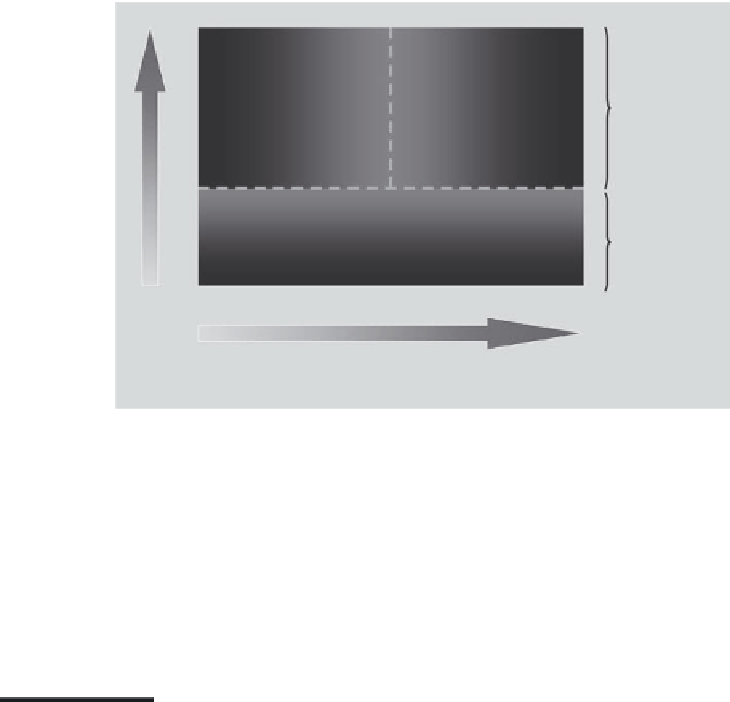Environmental Engineering Reference
In-Depth Information
In situ remediation
SVE
chemical or biological
reagents
RCRA haz
excavation
impediments
Thermal
treatment
5000
tons
Ex situ remediation
Non-RCRA haz
no excavation
impediments
Excavation and land disposal
Silt
Clay
Sand
Grain size
Note: Dashed lines represent gradational boundaries and range in cost effectiveness of remediation methods.
FIGURE 11.14
Selection of VOC soil remediation methods based on geology and volume.
probability of other technologies being selected increases primarily due to cost, time, or
access considerations. As soil grain size increases from left to right, the preferred technolo-
gies change depending on the dominant geology of the site.
11.5 Common Groundwater Remediation Technologies
The first method used to remediate impacted groundwater was called
pump and treat
.
Contaminated groundwater was pumped to the surface where it was treated to remove a
large percentage, or all of the contamination. The treated water was then reinjected into the
aquifer or discharged to the sanitary sewer system or surface water body. Early treatment
technologies were adopted from existing methods used for industrial wastewater and
publicly owned treatment plants. These techniques included solids removal, flocculation,
bioreactors, activated carbon filtration, disinfection, and reverse osmosis. By the middle to
late 1980s, it became apparent that pump and treat technologies applied to groundwater
were very expensive.
Not only was pump and treat expensive, it was not broadly effective. Groundwater
pump and treat was an effective means to ensure a contaminant plume did not spread
if it were designed and operated correctly, but it was not cost effective in restoring an
aquifer's groundwater to pre-contaminated levels. Since this discovery, several new
methods termed
in situ technologies
have been developed. Instead of bringing the con-
taminated water to the surface to be treated, the treatment is delivered where the con-
tamination resides—in the saturated zone. The goal of the in situ technologies was to
destroy, chemically reduce, or transform the contaminants into harmless compounds
within the plume of contaminants (USEPA 2007). These new technologies included

Search WWH ::

Custom Search